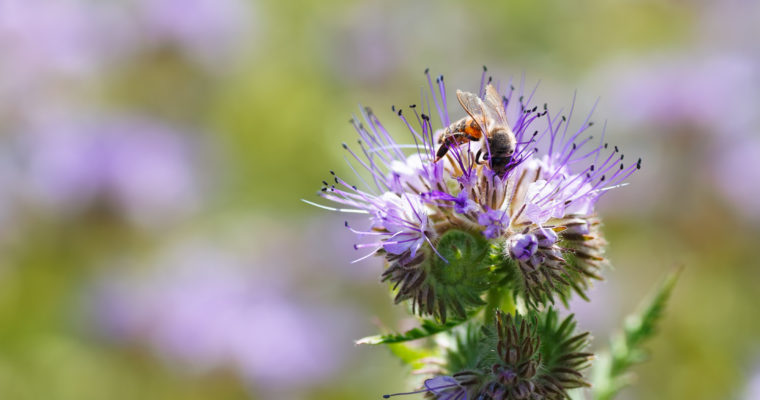Ever heard of The Butterfly Effect?
According to Wikipedia, the butterfly effect is the part in chaos theory that holds there is a “sensitive dependence on initial conditions in which a small change in one state of a deterministic nonlinear system can result in large differences in a later state.” It’s called the butterfly effect because it holds that something as small as a gentle beat of a butterfly’s wings may put powerful things, like a tornado, in motion. 1
I have trouble sleeping of late, so I often find myself pondering things like the butterfly effect at 2 AM. My brain combines information from recent news articles consumed with wisdom gleaned from recent books read and I wonder, what are the butterfly wings currently impacting our shared future? How are we unwittingly reshaping tomorrow?
Untold Connections, Unexpected Impacts
Firstly, I think about the revelation that flowers “listen” to bees. Next, that trees communicate with one another. Also, how essential oils serve as defense mechanisms and warning systems for aromatic plants. I ponder how fungus serves as a social network for trees.2 Entertain the fragile connection between threads unseen. Consider the notion of reciprocity so beautifully outlined in Robin Wall Kimmerer’s incredible work Braiding Sweetgrass.3
Finally, I wonder: what might we be disrupting? Where might it all lead?
Thanks to the latest article to pique my interest, an article that explores the impact of climate change on plants and their pollinators, I’ve gone down a new rabbit hole. The article begins by noting the decline in pollinator populations and emphasizes the particular risk to wild pollinators who face unprecedented loss of habitat before reminding us that climate change impacts pollinators’ relationship to their world.4
Specifically, the team’s study explores how the effects of changes in a plant’s environment result in changes to the plant’s scents and how those changes in turn effect bee behavior, pollination, and resulting fruit and seed. It’s a fascinating article and one that deepened an ongoing late night musing for me…
Webs, Seen and Unseen
Essential Oils & Pollinators
There are millions of acres of farmland and forest leveraged for essential oil production. Where the source material is full flower, whole fields of flowering plants (or whole blooms on flowering trees/shrubs) are taken for essential oil production. As a result, pollinators experience extreme disruption to their available resources. How does this sudden and dramatic change impact pollinators?
Plants and animals have co-evolved over many, many thousands of years. We know precious little about the connections forged between them along that timeline. For example, we don’t have the complete picture of how aromatic plants use essential oils to communicate–nor do we fully understand what purpose individual chemical constituents serve for plants. As more and more people enthusiastically use essential oils for all the things, what might we inadvertently be communicating to our immediate environment?
For example, what do the honeybees we steward on our farm come to believe is true based on what they smell on my skin? What comes of my wearing our natural, homemade body wash as I move in the garden around them and their hive? Does it raise their ire? Bring them comfort? Communicate threat?
When I sit beneath the big Ponderosa Pine on my property to take in her magical molecules, do I unwittingly bring her a message, too? If so, does my message faithfully represent what I could hope to tell her?
Manipulating Pollinators Directly
Our penchant for exploiting nature means we manipulate much of it. As a result, some of what’s going on in nature isn’t really natural at all. Those I call transcendent communicators–that is, human beings attuned to communication with non-human fauna and flora–often share messages about these critical disconnects.
In her acclaimed work, A Song of Increase: Listening to the Wisdom of Honeybees for Kinder Beekeeping and a Better World, “bee whisperer” Jacqueline Freeman talks about the consequences of manipulating the natural behaviors of bees. Some beekeepers replace honey stolen from the hive with high fructose corn syrup. (Honestly, I can’t imagine a less fair trade for the bees!) Queen bees sold with new hive packages are artificially inseminated. As a result, we may be slowly breeding out the characteristics that keep domesticated honeybees resilient in the face of disease and change.5
 In addition, the emphasis on stabilizing domesticated honeybees leaves behind all of the wild pollinators contributing to our food and eco-systems. Don’t I have the same level of responsibility for wild pollinators impacted by the choices I make on my property as I do for the hive of honeybees that arrived here in a box?
In addition, the emphasis on stabilizing domesticated honeybees leaves behind all of the wild pollinators contributing to our food and eco-systems. Don’t I have the same level of responsibility for wild pollinators impacted by the choices I make on my property as I do for the hive of honeybees that arrived here in a box?
Before long you realize, it’s not a rabbit hole, it’s a warren. It gets messy contemplating the consequences of what is invisible, unknown, or unconscious. The gift, I think, rests in the implicit invitation this kind of thinking offers. It’s an invitation to remembering our selves as part of something much, MUCH bigger than us. An invitation not to control things more, but to let them go. To reclaim our relationship to everything around us (and our selves) so we may surrender to the places that want our wonder, not our control.
Letting the Questions Be Enough
Too often human beings move carelessly through their environment. We fail to appreciate the relationships between things, especially relationships that don’t include us as touchpoints. So accustomed to being at the center of things, too many of us can’t imagine an equation without us in it. Consequently, we regularly exercise dominion in realms over which we have no real ascendancy. In steps seen and unseen, we leave our mark all over the world. And I lay awake some nights wondering about the footprints we aren’t seeing…
When I am disquieted by my thoughts in the wee hours, my heart reminds me of enduring joys and fresh promises. I remember the bee highway in Oslo. I remember that even politicians in the UK have realized the benefit of encouraging people to support pollinators. Through a bill proposed in 2018, they hoped to encourage the planting of wildflower corridors along British roadsides. After years of pleading, I even convinced my beloved to mow less area, less often. As a result, he now recognizes volunteers he used to call weeds as soft places for the bees to land.
I don’t have the answers to most of the questions my late night-mind entertains. But their consideration strengthens my resolve to live with intention, with presence. It deepens my commitment to taking responsibility for even unintended consequences. Give more than I take. Steward more flowers longer. Protect more space–and more vigilantly. Seek not balance in reciprocity, but ridiculous generosity, with real abandon on my part.
I hope you have a place you can make a difference and that you go there today.
Bless and blessed be!
Kristina, The Untamed Alchemist
P.S. Not ready to get out of the warren yet? Go deeper with books like The Hidden Life of Trees and the works of Stephen Harrod Buhner–or dive into becoming a transcendent communicator yourself with a plant communication course from AromaGnosis.
Featured image © Bigstock/Sari ONeal
Bumble bee on yellow flower image © Bigstock/pamparam
- Wikipedia, https://en.wikipedia.org/wiki/Butterfly_effect (accessed June 29, 2019)
- Nic Fleming, 2014 http://www.bbc.com/earth/story/20141111-plants-have-a-hidden-internet (accessed June 29, 2019)
- Kimmerer, Robin Wall. Braiding Sweetgrass. First edition. Minneapolis, Minn.: Milkweed Editions, 2013. Print.
- Coline Jaworski, Benoît Geslin and Catherine Fernandez. Phys.org, “Climate change: bees are disorientated by flowers’ changing scents”, 2019, https://phys.org/news/2019-06-climate-bees-disorientated-byflowers-scents.html (accessed June 29, 2019)
- Freeman, Jacqueline. Song of Increase: Listening to the Wisdom of Honeybees for Kinder Beekeeping and a Better World. Boulder, CO: Sounds True, 2016. Print.








